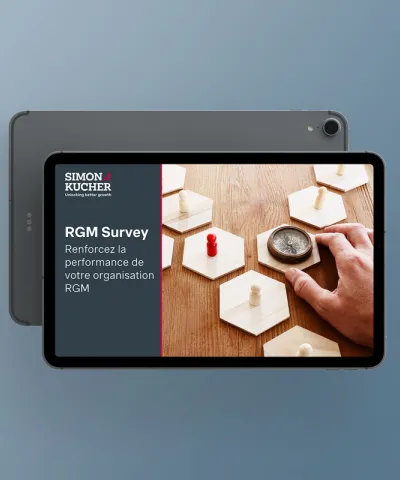Over the last two decades companies in the travel industry have effectively introduced price differentiation based on constantly updated data, so called dynamic pricing. In this industry, there are numerous examples of constantly fluctuating prices, e.g. for flights or hotel stays. Through the influx of digitalization, dynamic pricing is broadening and many companies outside the travel industry are adopting dynamic pricing. They have started to see that dynamic pricing can help to further exploit the willingness to pay and to introduce more sophisticated price differentiation models. Examples include Uber for taxi rides based on supply and demand, consumer electronics shop MediaMarkt that has installed electronic price tags to constantly change prices depending on competitor behavior and gas station chain Tanq4you that bases its prices on the actual oil price and the weather condition. But what pitfalls should you avoid before introducing dynamic pricing in your company?
Pitfall 1: Run before you can walk
When you are new to the field of dynamic pricing, it may be very tempting to dream about the immediate introduction of a dynamic pricing algorithm with dozens of predictive factors, based on for example customer (age, gender, average expenditure etc.) or situation data (time of day, weather conditions, season etc.). Our experience shows that this is not the way to go. With regard to dynamic pricing, we advise a step-by-step approach. Start the dynamic pricing dream with a (relatively) simple price differentiation approach, e.g. by differentiating prices on weekdays and weekend days. Once your customers and organization are used to price differentiation and volatile prices, you can slowly expand your dynamic pricing approach, e.g. by introducing a predictive algorithm or by experimenting with machine learning.
Pitfall 2: Let dynamic pricing be a black box
As customer trust is one of the key success factors for dynamic pricing, make sure that price differences are explainable, can be influenced by e.g. early booking and are in line with your company goals. Customer trust can be gained by explaining customers what determinants drive the pricing and by convincing customers that this is fair. The airline industry has understood this very well. Air lines explain customers what drives the pricing, e.g. the time of the day (during the week a morning flights is more expensive than a lunch flight) or the number of seats left (higher prices when demand is high). However, not all companies have succeeded in gaining the trust of their customers. Think of travel website Orbitz that used an algorithm to charge Apple users higher prices than Microsoft users or Amazon that used the ZIP code as a determinant for the price. The result? A lot of negative media coverage, angry and disappointed customers and a sharp decline in demand. The lesson? Explain what drives your prices and make sure this is considered fair by customers.
Pitfall 3: Only rely on your algorithm without human intervention
Forgetting the human aspect in dynamic pricing is a guarantee for failure. As appealing as it may sound that the dynamic pricing algorithm will determine the price, without any human intervention it will not work. Every company needs a dedicated pricing team to think about and explain the reasoning behind the dynamic pricing, to link specific events to demand peaks (e.g. Champions League final is in Manchester or today is a rainy day) and to monitor the algorithm. If there is e.g. no monitoring policy in place, the result might be that the algorithm generates a price of e.g. €10.000 euros for the last flight ticket from Amsterdam to Manchester. Useless to say that this is not a desirable and fair price and that this will result in negative media coverage and, more important, mistrust from customers.
Pitfall 4: Dynamic pricing is only for online
The new customer journey is multi-channel and needs to be seamlessly facilitated with defendable prices. Here is where traditional analog companies are struggling. Their current business model is not designed for dynamic pricing, whereas for original online players, it’s in their DNA. Online players excel in applying dynamic pricing, intelligently using market and competitive data to offer consumers the right price at the right time, and yes, at the right channel. That is the challenge for traditional players. You need to respond to the trend of web rooming, the on-the-spot price comparing of consumers, omni-channel. This does not mean that you need to have the lowest price point in the market, because that is a race to the bottom.
You need to be fair and defendable cross-channel with your pricing to survive in this new digital era. Up to the store level, you need to be able to explain your pricing points at different outings and versus competition. This is easier said than done, because many companies most often need to fix a historically grown plethora of prices and discounts, across regions, channels and customers. This makes it is a multi-year journey. Transitioning to the new omni-channel consumer journey is hard and requires serious investments.
With all this in mind, how will you apply dynamic pricing? Will you base your prices on (expected) demand, e.g. by asking higher prices for leisure activities during the weekend? Or will you use customer data to determine the price that perfectly exploits willingness to pay of the customer?
Simon-Kucher has identified the following pricing trends:
Trend 1: Dynamic Pricing: Four pitfalls to avoid
Trend 2: Behavioral Pricing: Instrument for revenue growth
Trend 3: Digital Pricing: Determine the right pricing for new business models








